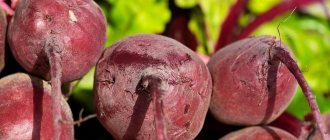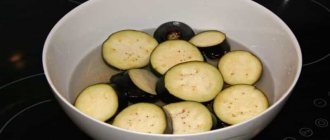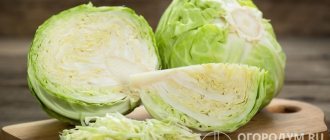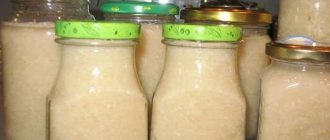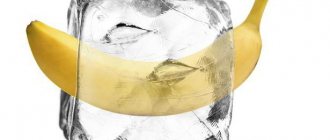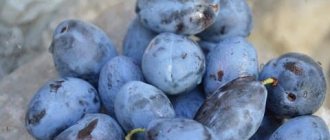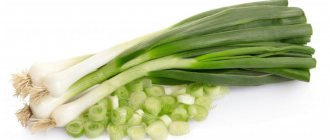Beets are included in many different dishes, primarily cold appetizers and salads. Storing the harvested crop raw is not always convenient, since at home root crops (especially early-ripening varieties) do not have a long shelf life - they dry quickly, rot, wither, wrinkle, becoming soft, in a word, they spoil. Therefore, many housewives prefer to freeze beets for future use, including them in the obligatory supply of vegetables for the winter.
Freezing root vegetables that have undergone pre-heat treatment reduces the time it takes to prepare them at the right time.
When frozen, you can preserve a large amount of the desired vegetable, since compressed packages with crushed raw materials do not take up much space in the freezer. This preparation allows you to prepare any beet dish much faster. From the point of view of benefits, it is more correct to freeze this root vegetable in its raw form, without subjecting it to heat treatment, but there are other methods with preliminary blanching, boiling, stewing, sautéing and frying.
Raw
To begin with, root vegetables are washed, thinly peeled with a vegetable peeler, grated or chopped. How exactly to chop the vegetables is decided by the housewife herself, depending on what dishes she plans to add the preparation to in the future. The cutting can be arbitrary or into pieces of the same shape: sticks, strips, cubes, circles, and also shaped using carving knives.
To speed up the process, it is advisable to use special kitchen appliances
It is recommended to lightly sprinkle the crushed mass with lemon juice or natural vinegar to preserve the rich beet color, and mix. Excess liquid should be carefully drained by squeezing out the vegetables or blotted with napkins. Next, the product is laid out in portions into bags, from which it is advisable to remove the air with a vacuum sealer. The workpiece packaged using this device fits into the freezer much more compactly. After defrosting, chopped or grated raw beets can be conveniently used in their natural form as an additional or main ingredient in vegetable salads; if necessary, they can be conveniently fried, boiled or stewed.
Sometimes fresh young beets are frozen entirely . To do this, small-sized root crops without signs of spoilage are sorted. The peel is usually not cut off, but thoroughly washed with water, removing dirt with a brush with stiff bristles. Wipe with napkins, removing excess moisture, put into bags and put in the freezer. It is worth keeping in mind that with this method of preparation, gaps and cavities filled with ice may occur inside the fruit, and such a product, after defrosting, is not suitable for cutting and decorating dishes.
It makes sense to cut larger specimens into halves or quarters
How long can frozen beets be stored?
Freezing beets is the best way to prepare them for the winter. Firstly, it is light, and secondly, freezing is faster than wrapping canned food. The third argument is that a minimum of resources is wasted: it is enough to put grated or whole beets in the freezer for the winter. And finally, root vegetables stored in this form retain maximum benefits.
And in order to ensure that the crop does not really lose its taste and vitamins, the beets should be placed in the freezer immediately after being removed from the ground. The sooner the product goes into winter storage, the better.
Now that we have found out that freezing beets for the winter is not only possible, but also necessary, it remains to find out how long they can be stored. On this score, gardeners do not have a common opinion. Some say – a maximum of four months. Others believe that nothing will happen to the vegetable in a year. And the optimal period is about six months to eight months.
How to defrost
- It is important to freeze beets for the winter at home in an extremely short time, and defrost them as slowly as possible. This way valuable substances will be preserved.
- The optimal solution is to remove the frozen products ahead of time and place them on the shelf closest to the freezer.
- Defrosting is acceptable at a temperature of 18 degrees or more, in the kitchen or room.
- It is allowed to season dishes with frozen beets without first thawing them. Especially if we are talking about chopped vegetables that were frozen raw.
- It is strictly forbidden to defrost with boiling water or in a microwave oven.
Conclusion: beets can be frozen in any form, in any proportions, in combination with carrots or alone, whole or sliced. The method depends on the preferences of the cook, the availability of free time and space in the freezer.
You may also find the following materials useful:
- How to store fresh corn on the cob at home
- I grow microgreens at home. Simple and useful
- Watermelon pickles: tasty, simple, unusual - my favorite time-tested recipes
- We eat fresh pumpkin until spring. Revealing the secrets of proper storage
As a semi-finished product
To season borscht and soups, it is more convenient to freeze beets in blanched, boiled, stewed, sauteed or fried form, which will significantly speed up the preparation of dishes. Peeled and grated/chopped raw beets are subjected to heat treatment, bringing them to the desired degree of softness, after which they are cooled, placed into portioned containers and frozen.
Baking and steaming
It is believed that when baked and steamed, root vegetables retain more flavor and beneficial microelements than boiled ones. This treatment is usually carried out without peeling the beets. The cooked vegetables are cooled completely, and only then peeled. The pulp is grated or chopped, placed in small containers, lightly compacted. Cover tightly with lids and put in the freezer for winter storage.
Many housewives achieve the baking effect in a regular microwave.
Recipes
In addition to the standard freezing of beets, there are other recipes: freezing fried beets and carrots, frozen borscht preparation, vegetable cocktail, frozen vegetable frying, etc.
You can safely combine beets with other vegetables and come up with your own recipes for preparations.
Recipes for fresh beets and carrots:
- Wash and peel fresh carrots and beets well.
- Grate on a coarse grater and mix both vegetables.
- Divide the resulting mixture into portions.
- Place in prepared containers or bags.
- Place in the freezer.
Wash and peel vegetables
Grate on a coarse grater
Roasted vegetable recipe:
- Peel a small onion and chop finely.
- Wash the carrots and beets, peel and cut or grate.
- Fry the onion in sunflower oil.
- Add beets and carrots, reduce heat and simmer until fully cooked.
- Place the resulting mixture in a bowl on a paper towel to absorb excess oil and allow to cool.
- Place the roast in containers and put it in the freezer.
Roasted vegetables
Place in portions in the freezer
Vegetable cocktail recipe:
You will need: beets, carrots, red and green peppers, tomatoes, mushrooms.
Preparation:
- Wash beets and carrots, peel and cut into cubes.
- Wash and cut peppers, mushrooms and tomatoes.
- Dry all vegetables.
- Freeze each ingredient separately.
- Mix in the required proportions and store in the freezer in portions.
Vegetable mixture for freezing can be anything
Freezing beet juice
When crushing root vegetables, a lot of juice is sometimes released. Beetroot juice is a preventive and even therapeutic remedy for anemia, problems with the liver and biliary tract. It is especially useful for women during certain periods associated with the menstrual cycle. In order not to lose such a valuable product, it is also frozen. The squeezed juice is filtered through a fine sieve or cheesecloth and poured into containers that are usually used for freezing ice, since it is not consumed in large quantities. You should know that the usefulness of fresh beetroot is proportional to its shelf life, so keeping it in the freezer for more than three months is not recommended. Also, do not rush to throw away a product that has passed its “expiration date”; it can be used as a natural coloring in the process of preparing various dishes.
The juice is a concentrate of all the beneficial substances contained in beets.
Subtleties of the process
Before freezing, prepare the container. It must be clean and dry. Plastic disposable containers or bags (special for freezing or regular packaging) are suitable.
Since the root vegetable loses its beneficial properties when re-frozen, it is advisable to freeze it in small portions, which are required for preparing the dish.
Root vegetables for freezing must be fresh, ripe, small in size, with smooth, uniformly burgundy skin, without damage or signs of rotting. Early varieties of beets that have low taste are not suitable for freezing.
Reference . Avoid beets with a lot of small roots at the main root - this is a sign that they are tough inside.
The tops of selected root crops are cut off and washed thoroughly under cold water with a brush.
Freezing beet tops
Preparations made from beet stalks and leaves are considered no less useful. This vitamin green is very pleasant to the taste and can add variety to any dish. The freshest and youngest shoots with leaves without damage are selected for freezing, washed to remove debris and dust, and dried. It is not necessary to separate the leaves from the petioles. Cut as desired and pack into bags without pressing. Beet tops can be mixed and frozen with other greens.
You will find original ideas and step-by-step recipes for preparing beet tops for the winter in the article on our website
Frozen beets for the winter. Are nutrients preserved when frozen?
Freezing is perhaps the most rewarding way to prepare vegetables for the winter. Firstly, it is very simple and quick (unlike conservation, which involves standing at the stove for a long time). Secondly, no additional resources are wasted, because your refrigerator works all year round anyway. And thirdly, in this case, almost all the beneficial substances that this or that plant product is rich in are preserved. Beets are no exception in this regard.
Important! To maximize the preservation of all the “richness” of a vegetable, you should try to freeze it as soon as possible after removing it from the garden - the sooner the better!
Of course, it is not entirely correct to say that vitamins are completely preserved in frozen vegetables. For example, the loss of vitamin C in frozen beets will be approximately 25%, vitamin B1, which the root vegetable is also rich in, will be almost the same. However, as they say, it depends on what you compare it with.
Of course, a vegetable picked from the garden is much healthier than a defrosted one. But in winter there is nowhere to get fresh vegetables in the truest sense of the word. What we eat has, in any case, been stored somehow, and for more than one day. In order for vegetables to last until winter, they are usually harvested ahead of time and treated with special preparations that prevent decomposition and mold formation.
This does not always give the expected result, so on the shelves you can often find fruits with signs of rot, fungus, as well as black spots, indicating improper storage. So it turns out that freshly frozen vegetables from your own dacha, despite all the vitamin losses, are much healthier than those bought in a supermarket or market in the middle of winter.
All the most important tips have already been said one way or another, but let’s repeat them for reinforcement:
- Any vegetables should be prepared in separate portions, just enough to be used at a time.
- Under no circumstances should a thawed product be re-frozen. Figure out how to use it, or, if you are a really bad housewife, just throw it away, but don’t poison yourself or your family with unsuitable food.
- If your equipment provides such an opportunity, use the “super freeze” function (it can also be called “fast” or “deep”). In this case, the product is “canned” immediately, as if freezing “alive”, in the form in which it was originally.
- For proper freezing, a temperature of at least minus 10°C is required, the optimal temperature is minus 18°C.
- If you are going to prepare boiled beets, you should not peel them before cooking.
- Only table varieties of beets can be frozen; early varieties are not suitable for this purpose.
- Only fresh, young and undamaged root vegetables should be selected.
- The less time passes between removing the beets from the garden and placing them in the freezer, the more beneficial properties will be retained in the workpiece.
- If harvesting is carried out several times during the season, it is advisable to mark the date of storage on each portion so that you can use the earlier vegetables first, and leave the fresher ones until the next time.
Storage conditions and periods
It is not worth storing beet preparations for a long time; it is advisable to use them within six months. Moreover, the sweeter and more sugary the vegetable, the shorter the shelf life should be. Don't forget to date the packages. It is recommended to defrost raw products gradually, at room temperature. It is unacceptable to place a frozen product (especially if it is intended for preparing raw salads) under hot water or in a microwave, even including a special mode. It is not necessary to defrost semi-finished products before adding them to hot dishes. Vegetable preparations cannot be re-frozen.
Useful tips
All the most important tips have already been said one way or another, but let’s repeat them for reinforcement:
- Any vegetables should be prepared in separate portions, just enough to be used at a time.
- Under no circumstances should a thawed product be re-frozen. Figure out how to use it, or, if you are a really bad housewife, just throw it away, but don’t poison yourself or your family with unsuitable food.
- If your equipment provides such an opportunity, use the “super freeze” function (it can also be called “fast” or “deep”). In this case, the product is “canned” immediately, as if freezing “alive”, in the form in which it was originally.
- For proper freezing, a temperature of at least minus 10°C is required, the optimal temperature is minus 18°C.
- If you are going to prepare boiled beets, you should not peel them before cooking.
- Only table varieties of beets can be frozen; early varieties are not suitable for this purpose.
- Only fresh, young and undamaged root vegetables should be selected.
- The less time passes between removing the beets from the garden and placing them in the freezer, the more beneficial properties will be retained in the workpiece.
- If harvesting is carried out several times during the season, it is advisable to mark the date of storage on each portion so that you can use the earlier vegetables first, and leave the fresher ones until the next time.
Useful tips for preparing for the winter: zucchini, peppers, tomatoes, cabbage, squash and green beans
Frozen beets are not a very familiar option for harvesting for the winter. However, in this way you can preserve much more useful substances in a vegetable than if stored improperly somewhere in a cellar or vegetable warehouse
It is only important to know the basic rules and strictly adhere to the technology, then you will have delicious and nutritious dishes with this most valuable root vegetable on your table all year round!
